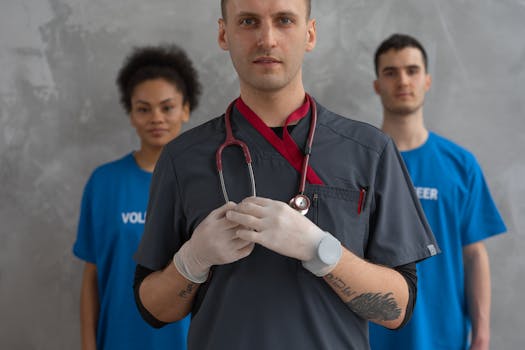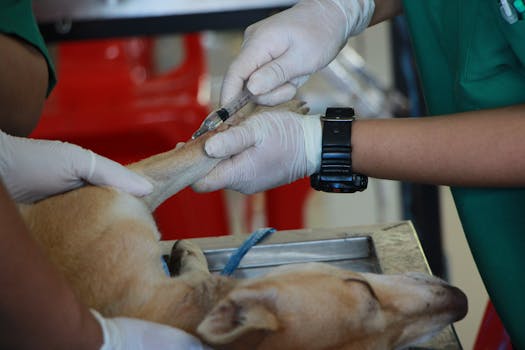
data-usecase-icon="donation_form"
Fonds de traitement médical d'urgence
Lancez un formulaire de don dédié afin de collecter des fonds pour les soins vétérinaires urgents et les opérations chirurgicales, en veillant à ce que chaque animal dans le besoin reçoive le traitement qu'il mérite.
data-usecase-cta= "donation_form"
data-usecase-icon="recurring_donations"
Club mensuel des parrains et marraines
Mettez en place un programme de dons récurrents qui relie les sympathisants à des animaux spécifiques, en fournissant chaque mois un financement continu pour la nourriture, les médicaments et la thérapie.
data-usecase-cta="recurring_donations" (dons récurrents)
data-usecase-icon="peer_to_peer"
Défi aux pairs "Paws for a Cause
Permettez à votre communauté de créer des pages personnelles de collecte de fonds et de recruter des amis pour soutenir leurs sauvetages d'animaux handicapés préférés.
data-usecase-cta="peer_to_peer"
data-usecase-icon="event"
Wag & Walk Virtual 5K
Vendez des billets pour une marche/course virtuelle ou en plein air de 5 km où les participants collectent des fonds en rassemblant des sponsors, ce qui stimule l'engagement et la visibilité.
data-usecase-cta="event"
data-usecase-icon="raffle"
Tombola du sauvetage : Gagnez un forfait de soins pour animaux de compagnie
Proposez des billets de tombola en ligne pour avoir une chance de gagner un ensemble de produits de luxe pour animaux de compagnie, ce qui suscite l'enthousiasme et génère des revenus réguliers avec un minimum de frais généraux.
data-usecase-cta="tombola"
data-usecase-icon="store"
Boutique Happy Tails
Ouvrez une boutique en ligne proposant des vêtements de marque, des calendriers et des reproductions d'œuvres d'art de sauvetage, transformant ainsi les sympathisants en panneaux d'affichage ambulants pour votre cause.
data-usecase-cta="store"
Comment Zeffy se compare-t-il aux autres plateformes de collecte de fonds pour Sauvetage d'animaux handicapés
Frais | Vous gardez | Vous perdez | ||
|---|---|---|---|---|
0 % de frais de plateforme et de traitement | $50,000 | $0 | ||
2,9 % + 0,30 $/transaction | $48,400 | -$1,600 | ||
2,2 % + 0,30 $ + ~2,35 % de frais de plateforme | $47,500 | -$2,500 | ||
2,9 % + 0,30 $/transaction | $48,350 | -$1,650 | ||
3,7 % + 1,79 $/billet + 2,9 % de frais de traitement | $46,550 | -3 450 $ (estimation) | ||
1.99% + $0.49 | $48,560 | -$1,440 |
100% gratuit, toujours.
Les 6 meilleures idées de collecte de fonds pour Sauvetage d'animaux handicapés
🏊♂️ Nager pour les pattes
Les chiots handicapés participent à des séances d'éclaboussures tandis que les sponsors font un don par tour pour financer des thérapies vitales et des équipements de mobilité.
🧘♂️ Paws & Pose Yoga
Cours de yoga en ligne où les participants pratiquent aux côtés de joyeux animaux de sauvetage ; les frais d'inscription permettent d'acheter du matériel de rééducation.
☀️ Pup Picnic Party
Des jeux, des sièges ombragés, des cabines photo et une vente aux enchères silencieuse sont organisés dans le parc. Les billets permettent de collecter des fonds pour les soins et la formation.
📸 Snap for Support
Partagez les photos d'été de nos sauveteurs résilients ; les sympathisants votent avec des dons et les meilleures photos figurent dans notre calendrier 2026.
🍹 Cocktails canins sympas
Les cafés locaux proposent des cocktails fictifs portant le nom de nos animaux ; une partie de chaque vente permet de couvrir les frais vétérinaires.
🚴♂️ Roll & Rescue Ride
Les frais d'inscription permettent d'acheter des aides à la mobilité et de fournir des soins médicaux.
Envie de plus d'inspiration ?
Découvrez plus de 40 sites gratuits Sauvetage des animaux handicapés idées de collecte de fonds
Principales subventions pour Sauvetage des animaux handicapés en 2025

2025 ASPCA Campagne "The Rescue Effect" Subventions
ASPCA
Non spécifié
La Société américaine pour la prévention de la cruauté envers les animaux® (ASPCA®) offre des subventions pour soutenir les organisations de protection des animaux dans le cadre de la campagne 2025 The Rescue Effect. Pour la plupart des organisations, la période de subvention s'étendra du 1er juillet au 31 octobre 2025. La période de candidature est maintenant terminée.

Programme de subventions pour les œuvres de bienfaisance de PetSmart
Organismes de bienfaisance PetSmart
Non spécifié
Cette subvention vise à stimuler les adoptions et à améliorer le bien-être des animaux de compagnie. Consultez le site pour connaître les dates limites d'octroi des subventions pour 2025.

2025 Programme de subvention pour la stérilisation des animaux de compagnie
Département californien de l'alimentation et de l'agriculture (CDFA)
Jusqu'à 500 000
Le Département californien de l'alimentation et de l'agriculture (CDFA) prévoit d'attribuer jusqu'à 500 000 dollars à des projets qui contribuent à fournir des services de stérilisation afin de réduire la surpopulation des animaux de compagnie. La période d'exécution s'étend du 6/1/2025 au 5/31/2026. La date limite de dépôt des candidatures était le 12/2/24.

Subventions de la Fondation de San Diego
Fondation San Diego
Non spécifié
La Fondation de San Diego offre des subventions aux organisations à but non lucratif, mais les possibilités spécifiques pour les sauvetages d'animaux handicapés ne sont pas détaillées dans les résultats de la recherche.
Principales entreprises qui font des dons à Sauvetage des animaux handicapés en 2025

Walmart
Elle soutient diverses organisations à but non lucratif par le biais de subventions locales et de programmes "Spark Good".

Fondation BISSELL pour les animaux de compagnie
Soutient les organisations de protection des animaux, les refuges et les groupes de sauvetage par le biais de son programme "Partners for Pets".

Fondation BISSELL pour les animaux de compagnie
Soutient les organisations de protection des animaux, les refuges et les groupes de sauvetage par le biais de son programme "Partners for Pets".

Fondation BISSELL pour les animaux de compagnie
Soutient les organisations de protection des animaux, les refuges et les groupes de sauvetage par le biais de son programme "Partners for Pets".
Questions fréquemment posées
Zeffy est-il vraiment 100% gratuit pour les sauveteurs d'animaux handicapés ? Quel est le piège ?
Oui, Zeffy est vraiment 100% gratuit pour les associations d'aide aux animaux handicapés ! Il n'y a pas de frais de plateforme, pas de frais de traitement et pas de coûts cachés. Nous sommes soutenus par les pourboires facultatifs des donateurs qui souhaitent soutenir notre mission, afin que chaque dollar que vous récoltez soit réinvesti dans la sauvegarde des animaux. C'est tout, il n'y a pas de piège !
Les associations de protection des animaux handicapés peuvent-elles utiliser Zeffy pour collecter des dons ?
Absolument ! Les associations de protection des animaux handicapés peuvent utiliser Zeffy pour collecter tout type de dons, qu'il s'agisse de dons généraux, de parrainages d'animaux spécifiques, de ventes de billets pour des événements, et même de dons récurrents, le tout sans frais. Cela garantit que vos fonds soutiennent directement les animaux dans le besoin.
Quels types de campagnes de collecte de fonds peuvent être organisés par Disabled Animal Rescues avec Zeffy ?
Les associations de protection des animaux handicapés peuvent mener diverses campagnes de collecte de fonds avec Zeffy, par exemple en organisant des campagnes de pair à pair au cours desquelles les sympathisants collectent des fonds en votre nom, en organisant des événements payants pour collecter des fonds, ou en renforçant le soutien par le biais de programmes de dons récurrents. Zeffy fournit des outils flexibles pour répondre à vos besoins en matière de collecte de fonds.
Quelle est la meilleure plateforme de collecte de fonds pour Disabled Animal Rescues ?
Zeffy est le meilleur choix pour les sauvetages d'animaux handicapés, car c'est la seule plateforme de collecte de fonds véritablement sans frais et 100 % gratuite. Nous ne prélevons aucun frais sur vos dons, ce qui signifie que plus d'argent va directement à votre mission de sauvetage et de soins des animaux handicapés, en favorisant la confiance avec vos donateurs sans aucun détail.













